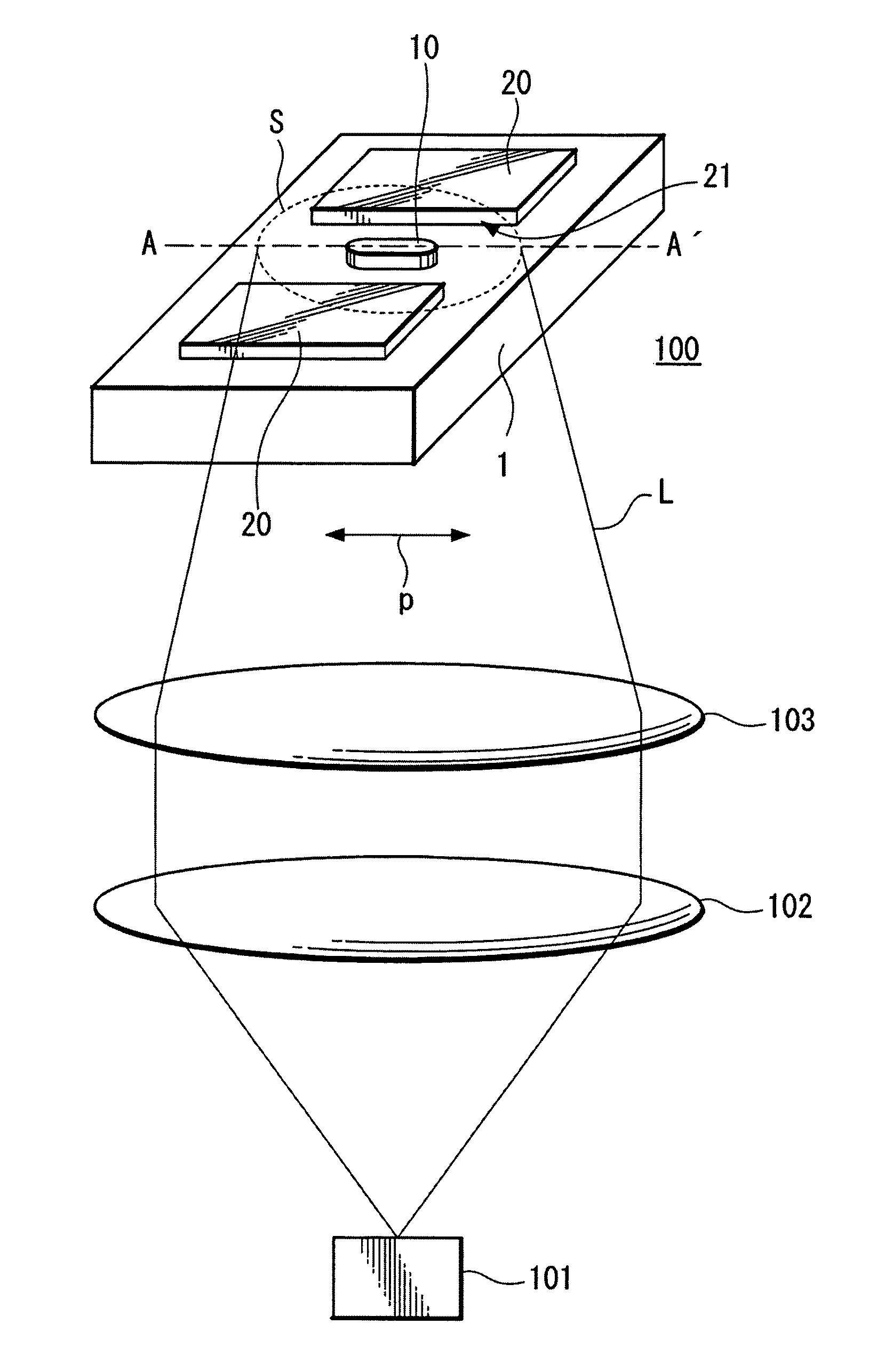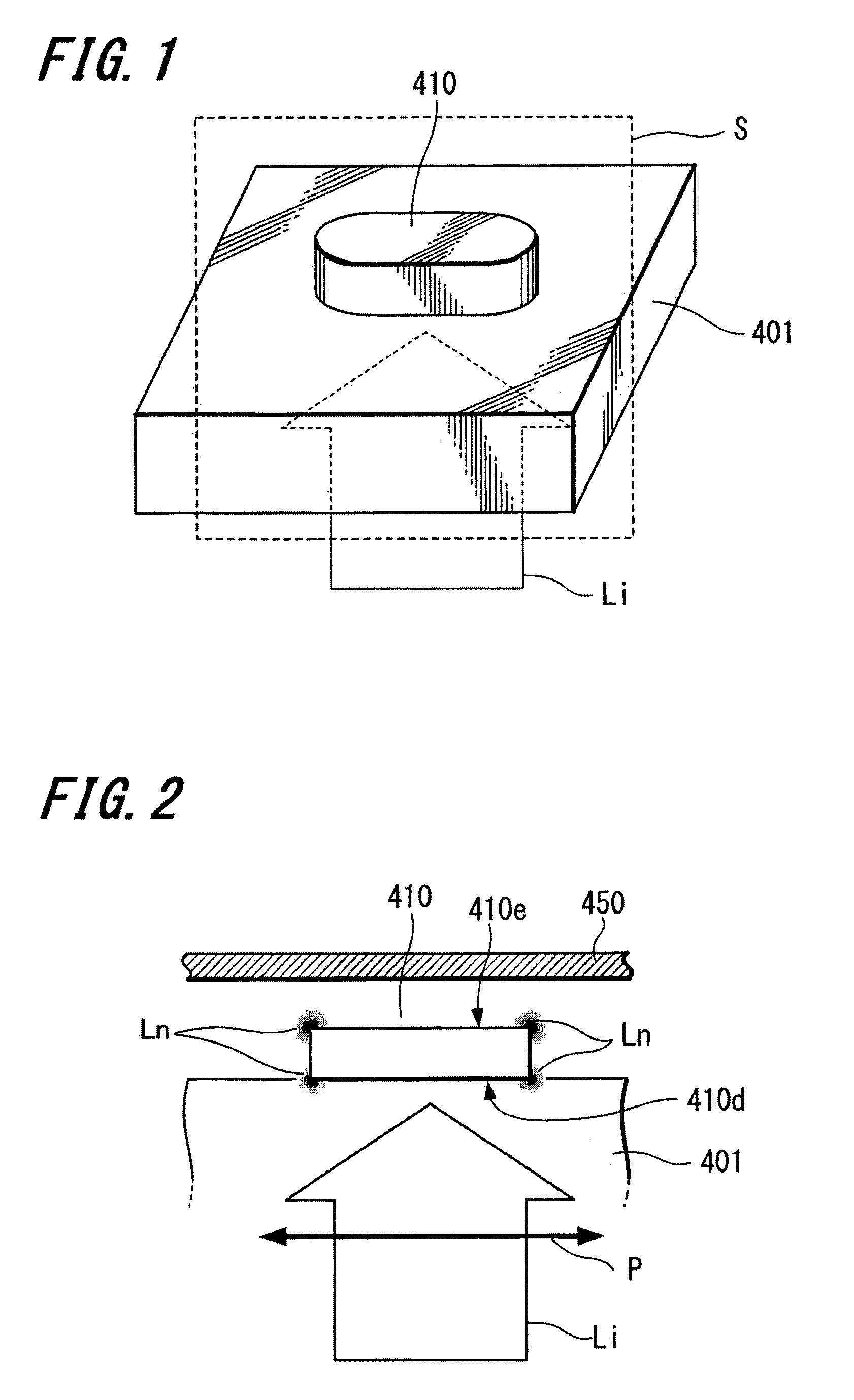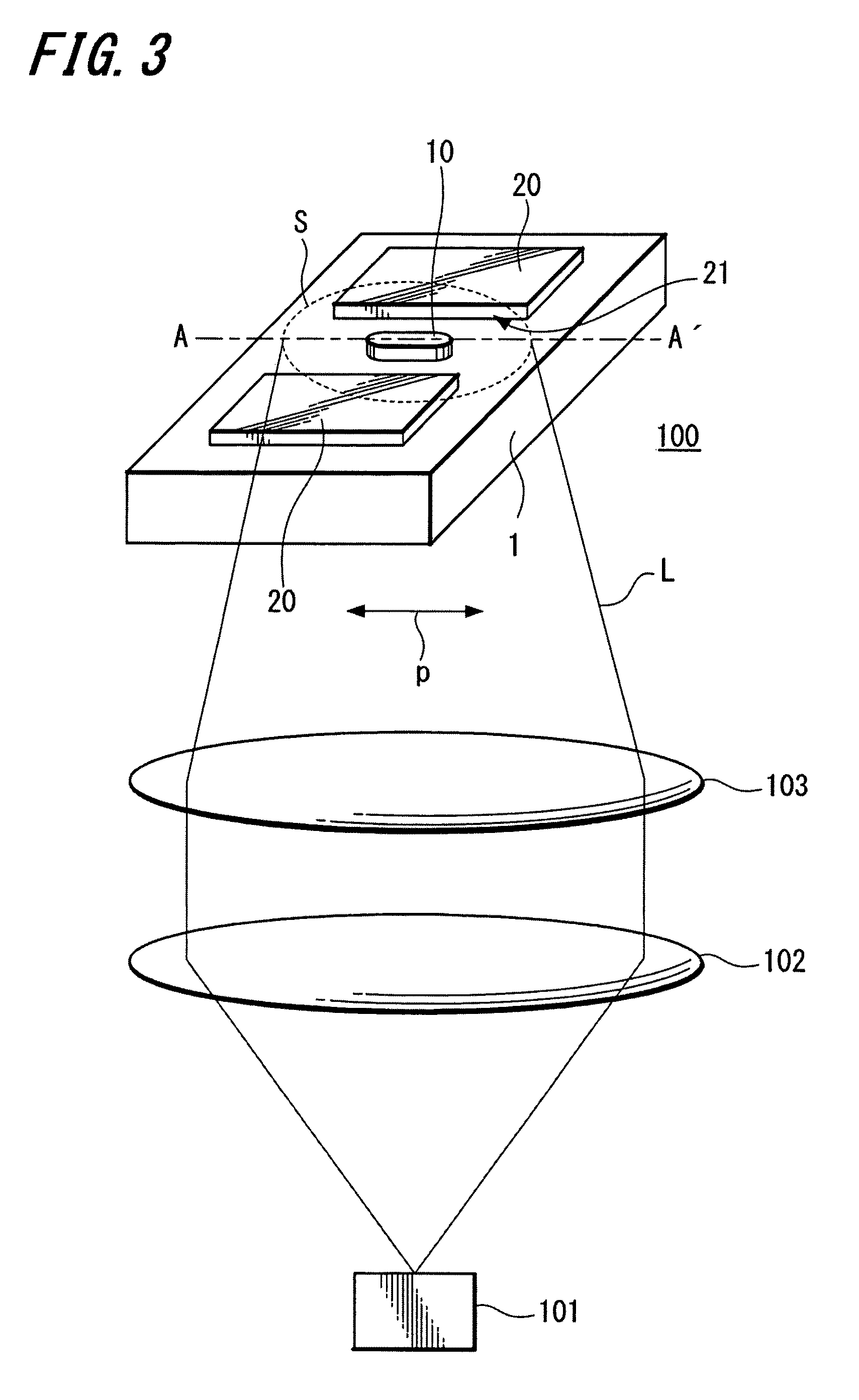Optical near-field generating apparatus and method and information recording and reproducing apparatus
a generation apparatus and near-field technology, applied in special recording techniques, instruments, optical beam sources, etc., can solve the problems of difficult production of scatterers, etc., to increase the intensity of optical near-field, and facilitate the effect of generation
- Summary
- Abstract
- Description
- Claims
- Application Information
AI Technical Summary
Benefits of technology
Problems solved by technology
Method used
Image
Examples
first embodiment
[0085]First, regarding the cases that the conductive body 20 is arranged as illustrated in FIG. 10A and FIG. 10B and FIG. 12, examples in which the shape of the scatterer 10 is changed are described. In each example, how the multiplication factor of the peak intensity of an optical near-field changes has been examined. In this example, as illustrated in a schematic cross section of FIG. 16, the scatterer 10 in an approximately rectangular shape in cross section and 30 nm thick is arranged on the substrate 1 made of SiO2, and a 6 nm thick thin TbFeCo film 32 is arranged over the scatterer 10 (and the substrate 1) through an 8 nm gap 31. The planar shape of the scatterer 10 is changed as illustrated in FIG. 17A through FIG. 17D, and the peak intensity of each optical near-field has been calculated. In the example of FIG. 17A, the scatterer 10 is in a planar rectangular shape, and the length l in the direction parallel to the polarizing direction of incident light is 70 nm, and the wid...
second embodiment
[0090]Next, with respect to examples in which the materials of the scatterer 10 and the substrate 1 and the wavelength of the incident light have been changed, how the multiplication factor of the peak intensity of each optical near-field changes has been similarly examined. FIG. 20A through FIG. 20D are planar views illustrating examples of the scatterer 10. In the examples illustrated in FIG. 20A through FIG. 20D, the scatterer 10 is in a rod-like shape. In the example illustrated in FIG. 20A, the length l of the scatterer 10 is 100 nm, the width w is 24 nm, the material of the scatterer 10 is silver, the material of the substrate 1 is quartz, and the wavelength of the incident light is 780 nm. In the example illustrated in FIG. 20B, the length l of the scatterer 10 is 100 nm, the width w is 24 nm, the material of the scatterer 10 is gold, the material of the substrate 1 is quartz, and the wavelength of the incident light is 780 nm. In the example illustrated in FIG. 20C, the leng...
third embodiment
[0098]Next, regarding a case that plural scatterers are provided, description is made with respect a result of examining the amplification effect of an optical near-field based on arrangement of conductive bodies.
[0099]A method has been known in which a second scatterer is arranged in the vicinity of a tip end of a scatterer in which an optical near-field is generated to amplify the intensity of the optical near-field. In the example below, as illustrated in FIG. 23, two scatterers, scatterers 10A and 10B, are arranged on the substrate 1. Each of the scatterers 10A and 10B is formed in a rod-like planar shape, and the width is 24 nm, the length l along the polarizing direction of the incident light is 90 nm, and the thickness is 30 nm. A peak-to-peak distance ds between the scatteres 10A and 10B is 20 nm. The conductive bodies 20 in the shapes similar to those of the example of FIG. 10A and FIG. 10B are arranged for the scatterers 10A and 10B, and the multiplication factor of the in...
PUM
| Property | Measurement | Unit |
|---|---|---|
| angle | aaaaa | aaaaa |
| angle | aaaaa | aaaaa |
| angle | aaaaa | aaaaa |
Abstract
Description
Claims
Application Information
 Login to View More
Login to View More - R&D
- Intellectual Property
- Life Sciences
- Materials
- Tech Scout
- Unparalleled Data Quality
- Higher Quality Content
- 60% Fewer Hallucinations
Browse by: Latest US Patents, China's latest patents, Technical Efficacy Thesaurus, Application Domain, Technology Topic, Popular Technical Reports.
© 2025 PatSnap. All rights reserved.Legal|Privacy policy|Modern Slavery Act Transparency Statement|Sitemap|About US| Contact US: help@patsnap.com



